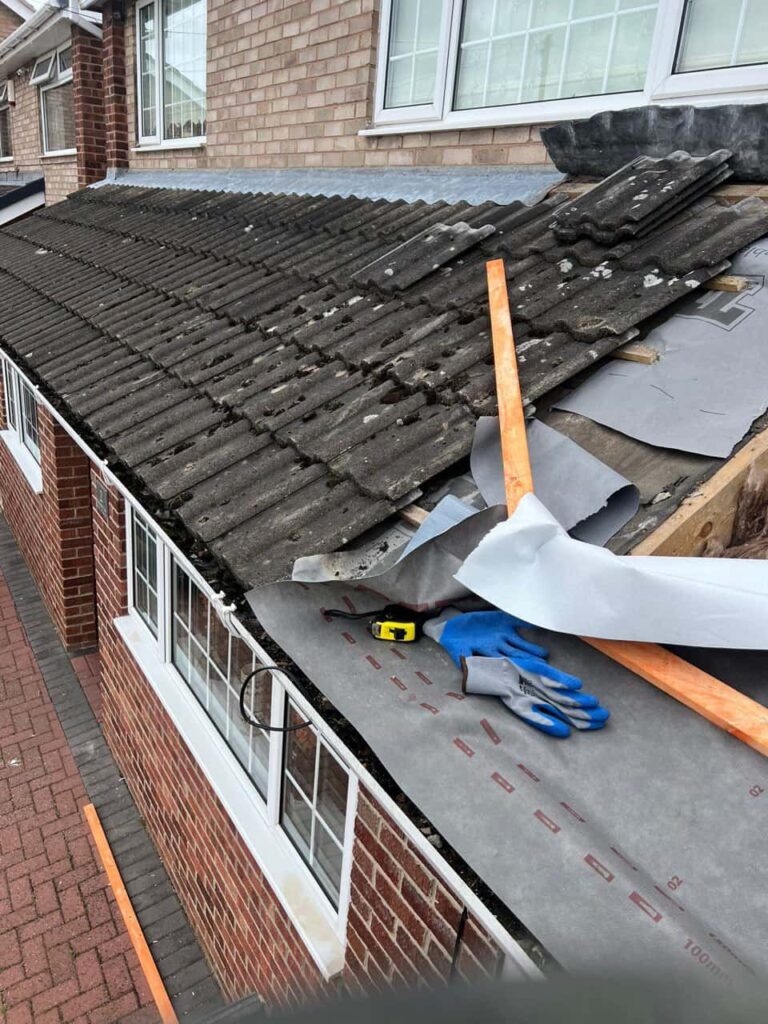Introduction: Ponding water on flat roofs is a common problem that can lead to various issues, including leaks, structural damage, and accelerated deterioration of roofing materials. Addressing ponding water effectively is essential for maintaining the integrity and longevity of flat roof systems. In this blog post, presented by Alfreton Roofing Repairs, we’ll explore the causes of ponding water on flat roofs and provide practical solutions and preventive measures to mitigate this issue.
Understanding Ponding Water:
Ponding water accumulates on a flat roof surface without draining or evaporating within 48 hours after precipitation. This stagnant water can result from various factors, including inadequate slope or drainage, debris buildup, improper installation, or structural settling. Ponding water poses several risks to flat roofs, including membrane deterioration, membrane punctures, algae and moss growth, and increased thermal stress.
Addressing Ponding Water Issues:
To address ponding water effectively on flat roofs, consider the following solutions and preventive measures:
- Improve Roof Slope: One of the most effective ways to prevent ponding water is to ensure that the flat roof has an adequate slope for proper drainage. Consult with a roofing professional to assess the existing slope of the roof and determine if corrective measures, such as adding tapered insulation or adjusting roof framing, are necessary to improve drainage.
- Clear Debris: Regularly remove leaves, branches, and other debris from the roof surface and drainage systems to prevent obstructions and allow for unimpeded water flow. Debris buildup can block roof drains, scuppers, and gutters, leading to ponding water and potential water damage.
- Install Roof Drains and Scuppers: Install or upgrade roof drains, scuppers, and overflow drains as needed to facilitate efficient water drainage from the roof surface. Properly positioned drains and scuppers will help redirect water from the roof and prevent ponding in low-lying areas.
- Repair Damaged Membranes: Inspect the roof membrane for signs of damage, such as cracks, tears, or punctures, that may contribute to ponding water issues. Promptly repair or replace damaged membrane sections to restore the roof’s integrity and prevent water infiltration.
- Consider Roof Coatings: Apply reflective roof coatings or waterproofing membranes to the roof surface to enhance durability, reduce thermal stress, and minimise water absorption. Roof coatings can help mitigate ponding water issues and extend the service life of flat roof systems.
Preventing Ponding Water:
In addition to addressing existing ponding water issues, take proactive steps to prevent recurrence in the future:
- Conduct Regular Inspections: Schedule routine inspections of the flat roof to identify and address drainage problems, membrane defects, and other potential issues before they escalate.
- Implement Maintenance Plan: Develop a comprehensive maintenance plan that includes periodic cleaning, debris removal, and gutter maintenance to ensure optimal performance of the roof drainage system.
- Monitor Roof Performance: Monitor the roof’s performance during and after rainfall to identify areas prone to ponding water and implement corrective actions as needed.
Conclusion: Ponding water on flat roofs can have serious consequences if left unaddressed, including water damage, structural deterioration, and premature roof failure. By implementing appropriate solutions and preventive measures, such as improving roof slopes, clearing debris, installing drainage systems, repairing membrane defects, and conducting regular maintenance, you can effectively mitigate ponding water issues and prolong the lifespan of your flat roof system.
Call us on: 01773 304 893
Click here to find out more about Alfreton Roofing Repairs.
Click here to complete our contact form and see how we can help with your roofing needs.

